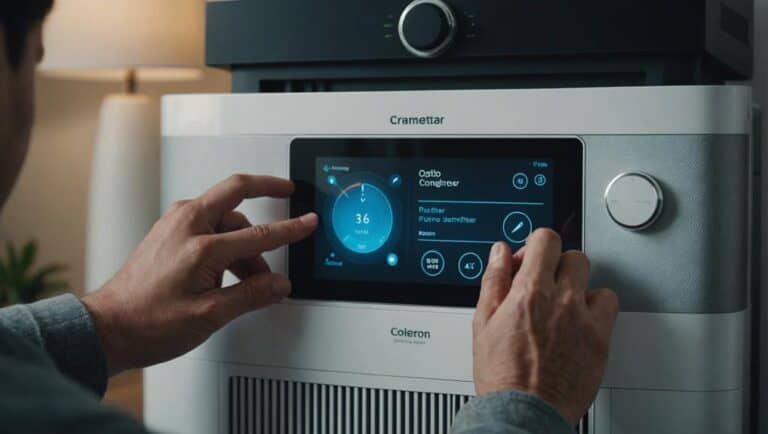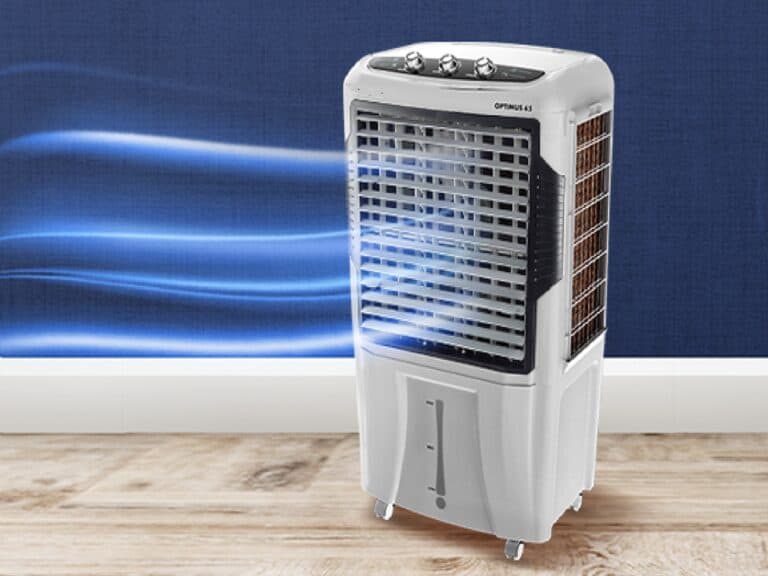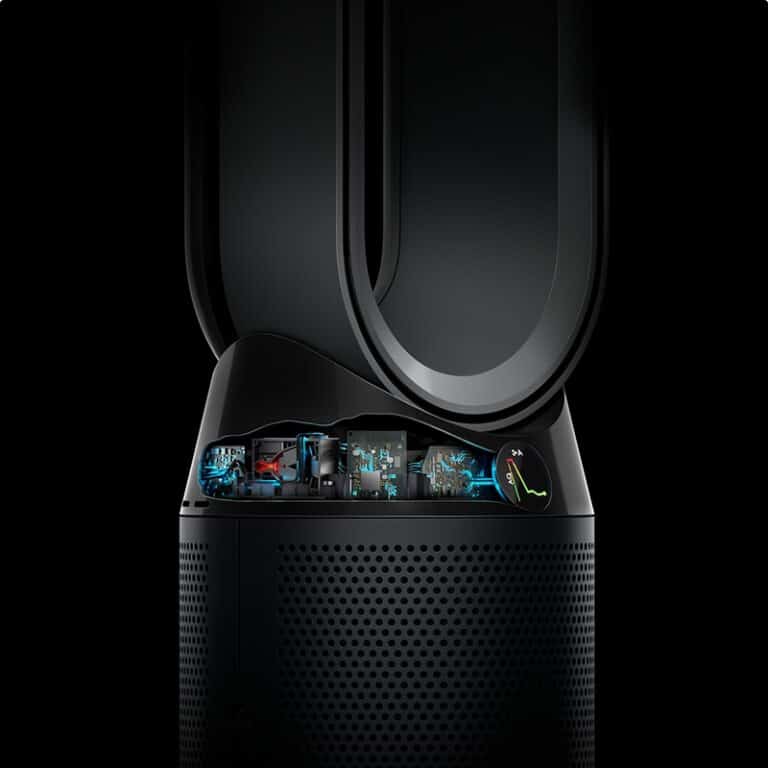How to Ventilate a Room: Effective Airflow Strategies
Ventilating a room is fundamental for maintaining a healthy and comfortable indoor environment. Good ventilation helps disperse indoor pollutants, regulates temperature, and reduces the accumulation of moisture, which can lead to mold growth. There are several ways to improve the airflow in a room, and knowing the best methods can make your living or work space more pleasant while safeguarding your health.

We understand that proper indoor air quality is essential for well-being, hence discussing the merits of various ventilation strategies is valuable. Whether opting for natural methods, like opening windows to create cross-breezes, or using mechanical techniques such as installing exhaust fans, the goal is to circulate fresh air effectively. Considering the layout of your space and understanding the specific ventilation requirements will guide us in choosing the best approach.
Key Takeaways
- Effective ventilation is crucial for good indoor air quality.
- Various methods can be employed to ventilate rooms, depending on their specific needs.
- Regular evaluation and improvement of ventilation strategies are important for ongoing air quality.
Understanding Ventilation
Proper ventilation is crucial for maintaining good indoor air quality. We’ll explore the essential concepts and the importance of allowing fresh air to flow through our living spaces.
Basics of Ventilation
Ventilation is the intentional introduction of outside air into a space and is vital for displacing stale, potentially contaminated air with fresh air. Two primary methods facilitate this process: natural ventilation and mechanical ventilation. Natural ventilation depends on passive air flow through open windows and doors, utilizing pressure differentials created by wind and temperature differences. On the other hand, mechanical ventilation uses fans and duct systems to control air flow. Our aim is to ensure continual circulation and prevent buildup of pollutants, thus preserving air quality within our indoor environments.
Significance of Ventilating Rooms
The paramount goal of ventilating rooms is to achieve and maintain high indoor air quality. By removing or diluting pollutants, ventilation helps to reduce the presence of irritants like dust, allergens, and volatile organic compounds (VOCs). Furthermore, effective ventilation moderates humidity levels, thus curtailing the potential growth of mold and creating a more comfortable living space. Adequate room ventilation enables us to foster a healthy environment by mitigating health risks associated with poor air circulation.
Preparation for Ventilating a Room

Before beginning to ventilate a room, it’s crucial to evaluate the specific needs of the space and consider safety measures. Our goal is to create an environment free of pollutants, odors, and allergens, including mildew, mold, and dust, which are common signs of poor ventilation.
Assessing Ventilation Needs
To start, we need to identify the room’s current air quality. Look for signs of poor ventilation, such as persistent odors, visible mold growth, or excessive dust. These issues suggest that the ventilation system may not effectively remove pollutants and allergens from the air. High humidity levels can lead to mildew and mold, which not only damage the structure of the room but also pose health risks.
- Check for any existing vents, fans, or windows.
- Consider the room’s size and the number of occupants.
- Understand the activities that commonly take place, as they can contribute to air quality.
Safety Considerations
When addressing ventilation, we must prioritize safety. It’s essential to:
- Ensure that any ventilation methods used do not compromise the structural integrity of the room.
- Verify the operation of carbon monoxide detectors and smoke alarms, as increased airflow can spread fire faster if one ingnites.
- Be aware of outdoor air quality; when it’s poor, we may need to rely on internal air purifiers instead of bringing in outside air.
By taking these steps, our ventilation strategy can significantly improve the air quality of the room while safeguarding the health and well-being of its occupants.
Natural Ventilation Strategies
Natural ventilation utilizes elements of nature, such as the wind and temperature differences, to move fresh air into and out of our indoor spaces. By managing windows and doors effectively, we can enhance air circulation without the need for mechanical systems.

Utilizing Windows
Windows are our first allies in increasing ventilation naturally. To facilitate a cross-breeze, it’s essential to understand the wind patterns around our home. We recommend opening windows on opposite sides of a room or across several rooms to create a flow of air. This can be especially effective when windows are positioned on windward and leeward sides of the building, allowing the breeze to enter and exit effectively. In addition, installing adjustable window openings, such as louvers, can help us regulate the air movement as needed.
Opening Doors for Airflow
Doors play a crucial role in supporting natural airflow within our homes. Open doors allow air to move freely between rooms, contributing to a thorough air exchange. We propose creating an “airflow path” by strategically opening interior doors along with the windows to promote even better air movement. This strategy assists in generating a cross-breeze that can move throughout the home, channeling out stale air and drawing in fresh outdoor air.
Mechanical Ventilation Techniques
In modern homes and offices, we often rely on mechanical devices to maintain adequate ventilation. These techniques are imperative for ensuring good air quality and can significantly impact comfort and health.
Using Exhaust Fans
Exhaust fans are essential components in our ventilation strategy. We install them typically in areas with high moisture or pollutant levels, such as bathrooms and kitchens. An exhaust fan works by pulling stale air out of the room, which in turn causes fresh air to be drawn into the space through vents or small openings. We must ensure that the ducts connected to these fans are properly sealed and lead outdoors to prevent air from being recycled within the house.
Employing Air Conditioning Systems
Our air conditioning systems aren’t solely for cooling; they’re a key part of our mechanical ventilation approach. These systems typically include filters that clean the air of particulates as it’s circulated. By setting our HVAC systems to the ‘ventilate’ mode, we enable an air exchange with the outside, which helps ventilate a room without windows effectively.
- Ensure regular maintenance of our air conditioning unit filters for optimal air quality.
- Use a thermostat with a fan-only option to continue air circulation without cooling or heating.
Integrating Ceiling and Box Fans
Ceiling fans are a great way to enhance air circulation in any room. By adjusting the blade direction, we can ensure that air is either being pushed down for a cooling effect in the summer or circulated to distribute warm air in the colder months. On the other hand, box fans are portable and can be strategically placed to optimize airflow – either by drawing in fresh air from a window or by blowing air out, directly enhancing the ventilation system.
- Arrange fans to create a cross breeze where fresh air is pulled in and stale air is expelled.
- Keep our ceiling fans clean and dust-free to maintain efficiency and indoor air quality.
By carefully incorporating these mechanical ventilation techniques, we can significantly improve the air exchange and quality in our living and working spaces.
Enhancing Ventilation in Specific Rooms
Proper ventilation is crucial in maintaining a healthy and comfortable environment in our homes. We’ll guide you through enhancing airflow in critical areas such as the kitchen, bathroom, and laundry rooms, where moisture and odors are most prevalent.
Kitchen Ventilation
In our kitchens, where cooking generates heat, steam, and odors, efficient ventilation is essential. We recommend the installation of a range hood directly over the stove to capture and exhaust harmful pollutants and excess humidity. To support this, ensure that the range hood is vented outdoors rather than simply circulating air back into the room. For added ventilation, we can also utilize windows or install an additional extractor fan if the space allows.
Bathroom Ventilation
Our bathrooms require dedicated attention to prevent mold and mildew growth due to high moisture levels. An extractor fan should be installed and used during and after taking a shower to effectively remove moist air. If possible, we should also make use of windows or air vents that provide an external pathway for steam to escape. Additionally, it’s advantageous to keep the door open when the bathroom is not in use, encouraging air circulation with adjacent rooms.
Laundry and Utility Rooms
These areas contain appliances like washers and dryers that can produce humidity and warmth, necessitating good ventilation. We should install vents that expel dryer air directly outside to prevent the buildup of moisture and lint, which can also pose a fire risk. Adequate spacing around these appliances will allow for air movement, keeping the environment safe and dry. Consider using a dehumidifier if these rooms lack external windows or adequate built-in ventilation.
Additional Ventilation Improvements
In ensuring our indoor environments remain healthy and comfortable, we consider both maintaining air quality and controlling temperature and humidity as pivotal steps. Let’s explore specific methods to uphold and enhance our living spaces.
Maintaining Air Quality
We can significantly improve the air quality in our rooms by integrating air purifiers and air filters. These devices work by trapping pollutants and allergens, which can help individuals with allergies or respiratory issues. Air-purifying plants are also beneficial as they naturally filter certain toxins, while adding a touch of greenery. For more permanent solutions, air bricks are an effective method of facilitating continuous air flow in a subtle and energy-efficient manner.
When discussing air quality, it’s crucial to address air filtration systems. These systems, particularly when part of a central air conditioning unit, can integrate high-grade filters that capture even the smallest contaminants, thereby promoting a cleaner and fresher living environment.
Controlling Temperature and Humidity
Adjusting the temperature and humidity levels in our homes not only ensures comfort but also helps maintain the structural integrity of the building. Using dehumidifiers allows us to effectively combat excess moisture and prevent condensation, which can lead to mold growth and property damage. Conversely, during dry seasons or in arid climates, strategically placing a few dehumidifiers can help add necessary moisture to the air.
For temperature control, central air conditioning systems offer the most comprehensive solution. However, when energy efficiency is a concern, we can employ heat recovery ventilators which reclaim energy from exhaust air and use it to temper the incoming fresh air. In addition, employing cooling strategies like shade screens or thermal curtains can lessen the reliance on energy-intensive devices, thus contributing to both our comfort and energy efficiency goals.
Addressing Ventilation Challenges
In this section, we’ll discuss specific strategies to ensure effective ventilation, particularly in challenging scenarios like rooms without windows, and we’ll offer solutions to combat allergens and VOCs that compromise indoor air quality.
Handling Rooms without Windows
Rooms without windows pose a unique challenge for ventilation, as natural airflow is restricted. To ventilate a room without windows, we recommend employing mechanical methods. Consider the installation of an air exchange system that introduces fresh air from outside and circulates it within the room. Extractor fans can also be beneficial, as they forcefully remove damp air and reduce humidity levels, preventing the development of musty odors.
- Ventilation Strategies:
- Install an air exchange system
- Utilize extractor fans
Dealing with Allergens and VOCs
Exposure to allergens and volatile organic compounds (VOCs) can lead to several health issues, including allergies, respiratory issues, and asthma. To manage these risks, we must focus on purifying the air. Air purifiers equipped with HEPA filters are highly effective at capturing particulate matter, thus reducing allergens in the environment. For VOCs, activated carbon filters can adsorb these chemicals, ensuring that the air in your home is cleaner and healthier to breathe.
- Air Purification Methods:
- Use HEPA filter air purifiers
- Employ activated carbon filters to tackle VOCs
Ventilation and Health
We understand the significant impact that proper ventilation has on both health and comfort within indoor environments. Our focus is on the direct effects of ventilation on health issues and how enhancing comfort for visitors can be achieved through improved air quality.
Effects on Health Issues
Indoor air quality is crucial to managing and mitigating health issues, particularly respiratory conditions. Adequate ventilation removes contaminants such as dust, allergens, and volatile organic compounds (VOCs), which are known to exacerbate asthma and other respiratory problems. By consistently introducing fresh air and expelling polluted air, we reduce the risk of illness and enhance overall well-being.
- Reduction in Contaminants: Decreases harmful particles and gases in the air.
- Dilution of Airborne Pathogens: Lowers the concentration of virus particles, which can inhibit the spread of illnesses like COVID-19.
Enhancing Comfort for Visitors
When we consider comfort for visitors, a well-ventilated space is inviting and contributes to a more pleasant experience. Proper air flow not only eliminates odors but also maintains a balanced humidity level, creating a more comfortable environment for everyone.
- Balanced Humidity Levels: Aims for the ideal range to prevent mold growth and discomfort.
- Elimination of Odors: Ensures that the air remains fresh and void of stale or unpleasant smells.
By focusing on these aspects, we create healthier and more welcoming spaces for all individuals who enter them.
Maintaining Effective Ventilation
To ensure our spaces remain healthy and comfortable, we must maintain good ventilation in our homes. This includes routine check-ups and strategic furniture placement to optimize air flow.
Regular Ventilation Check-ups
We conduct regular check-ups to assess the air quality and to detect any signs of poor ventilation. Some key tasks include:
- Inspecting and cleaning vents and air intakes to prevent blockages.
- Evaluating HVAC systems to ensure they are in peak working order.
- Checking for air leaks around windows and doors which can undermine ventilation efforts.
By adhering to a consistent schedule, we catch issues early and keep our home’s air movement effective and of high quality.
Furniture and Ventilation Flow
Furniture arrangement plays a pivotal role in sustaining effective air movement. To optimize air flow in our rooms, we consider the following:
- Space out furniture to avoid creating dead zones where air can become stagnant.
- Position furniture away from vents to prevent obstruction and allow for free air movement.
- Utilize tall pieces such as bookcases to direct airflow in large rooms, acting as makeshift air channels.
Through thoughtful furniture arrangement, we ensure good ventilation and maintain a pleasant indoor environment.
Conclusion
In ensuring our living spaces have adequate airflow, we’ve explored numerous effective ways to ventilate a room. We can confidently enact simple yet powerful strategies to maintain a source of fresh air, which is vital for our health and comfort.
Natural Ventilation: The most immediate step involves the opening of windows and doors, harnessing the natural air currents to circulate through our space.
- Use fans to augment this process, positioning them to create an effective airflow pathway.
Mechanical Solutions: For rooms where natural ventilation isn’t sufficient, we might consider exhaust fans, particularly in high humidity areas like bathrooms to prevent mold and stale air.
- Even in cooler months, the brief opening of a window can significantly improve air quality without losing too much heat.
Consistency is Key: Regularly checking and maintaining our ventilation systems ensures they operate efficiently.
By implementing these methods, we enhance the air quality of our rooms, bringing about a refreshing atmosphere that promotes well-being. Remember, good ventilation is a balance—a constant, careful tuning of our environment to achieve the comfort and health benefits of clean, fresh air.





